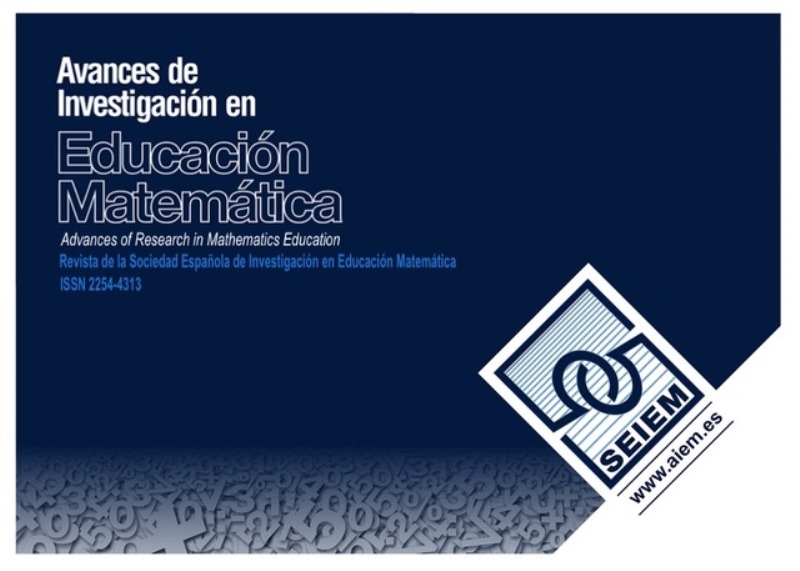The Nature and Role of Mathematical Connections in the Teaching and Learning of Mathematics
DOI:
https://doi.org/10.35763/aiem25.6777Keywords:
Mathematical connections, Ethnomathematical connections, Ontosemiotic approachAbstract
Research on learning and teaching mathematics has highlighted the importance of connections in this process. A global look at the articles in this monograph shows that research on mathematical connections is an increasingly relevant topic for Mathematics Education and, also, that its theoretical references are becoming more developed.
Downloads
References
Businskas, A. M. (2008). Conversations about connections: How secondary mathematics teachers conceptualize and contend with mathematical connections (Unpublished PhD dissertation). Simon Fraser University.
Coxford, A. F. (1995). The case for connections. In P. A. House & A. F. Coxford (Eds.), Connecting mathematics across the curriculum (pp. 3-12). National Council of Teachers of Mathematics.
Eli, J. A., Mohr-Schroeder, M. J., & Lee, C. W. (2011). Exploring mathematical connections of prospective middle-grades teachers through card-sorting tasks. Mathematics Education Research Journal, 23(3), 297-319. https://doi.org/10.1007/s13394-011-0017-0
Evitts, T. (2004). Investigating the mathematical connections that preservice teachers use and develop while solving problems from reform curricula (Unpublished PhD dissertation). Pennsylvania State University College of Education.
García-García, J., & & Dolores-Flores, C. (2020). Exploring pre-university students’ mathematical connections when solving calculus application problems. International Journal of Mathematical Education in Science and Technology, 52(6), 912-936. https://doi.org/10.1080/0020739X.2020.1729429
García-García, J., & Dolores-Flores, C. (2021). Pre-university students’ mathematical connections when sketching the graph of derivative and antiderivative functions. Mathematics Education Research Journal, 33(1), 1-22. https://doi.org/10.1007/s13394-019-00286-x
Godino, J. D., Batanero, C., & Font, V. (2007). The onto-semiotic approach to research in mathematics education. ZDM-The International Journal on Mathematics Education, 39(1-2), 127-135. https://doi.org/10.1007/s11858-006-0004-1
Hiebert, J., & Carpenter, T. (1992). Learning and teaching with understanding. In D. A. Grouws (Ed.), Handbook of research of mathematics teaching and learning (pp. 65-79). Macmillan.
Ledezma, C., Font, V., & Sala, G. (2023). Analysing the mathematical activity in a modelling process from the cognitive and onto-semiotic perspectives. Mathematics Education Research Journal, 35(4), 715-741. https://doi.org/10.1007/s13394-022-00411-3
National Council of Teachers of Mathematics [NCTM] (2000). Principles and standards for school mathematics. Autor.
Rodríguez-Nieto, C. A., Cabrales, H. A., Arenas-Peñaloza, J., Schnorr, V., & Font, V. (2024). Onto-semiotic analysis of Colombian engineering students’ mathematical connections to problems-solving on vectors: A contribution to the natural and exact sciences. EURASIA Journal of Mathematics, Science and Technology Education, 20(5), 2-24. https://doi.org/10.29333/ejmste/14450
Rodríguez-Nieto, C. A., Font, V., Borji, V., & Rodríguez-Vásquez, F. M. (2022). Mathematical connections from a networking theory between extended theory of mathematical connections and onto-semiotic approach. International Journal of Mathematical Education in Science and Technology, 53(9), 2364-2390. https://doi.org/10.1080/0020739X.2021.1875071
Downloads
Published
How to Cite
Issue
Section
License
Copyright (c) 2024 Vicenç Font Moll, Camilo Andrés Rodríguez-Nieto

This work is licensed under a Creative Commons Attribution 4.0 International License.
The articles published in this journal are under a license Creative Commons: By 4.0 España from number 21 (2022).
Authors who publish with this journal agree to the following terms:
- Authors retain copyright and keep the acknowledgement of authorship.
- The texts published in this journal are – unless indicated otherwise – covered by the Creative Commons Attribution 4.0 international licence. You may copy, distribute, transmit and adapt the work, provided you attribute it (authorship, journal name, publisher) in the manner specified by the author(s) or licensor(s). The full text of the licence can be consulted here: http://creativecommons.org/licenses/by-nc/4.0.
- Authors are able to enter into separate, additional contractual arrangements for the non-exclusive distribution of the journal's published version of the work (e.g., post it to an institutional repository or publish it in a book), with an acknowledgement of its initial publication in this journal.
- Authors are permitted and encouraged to post their work online (e.g., in institutional repositories or on their website) prior to and during the submission process, as it can lead to productive exchanges, as well as earlier and greater citation of published work (See The Effect of Open Access).









